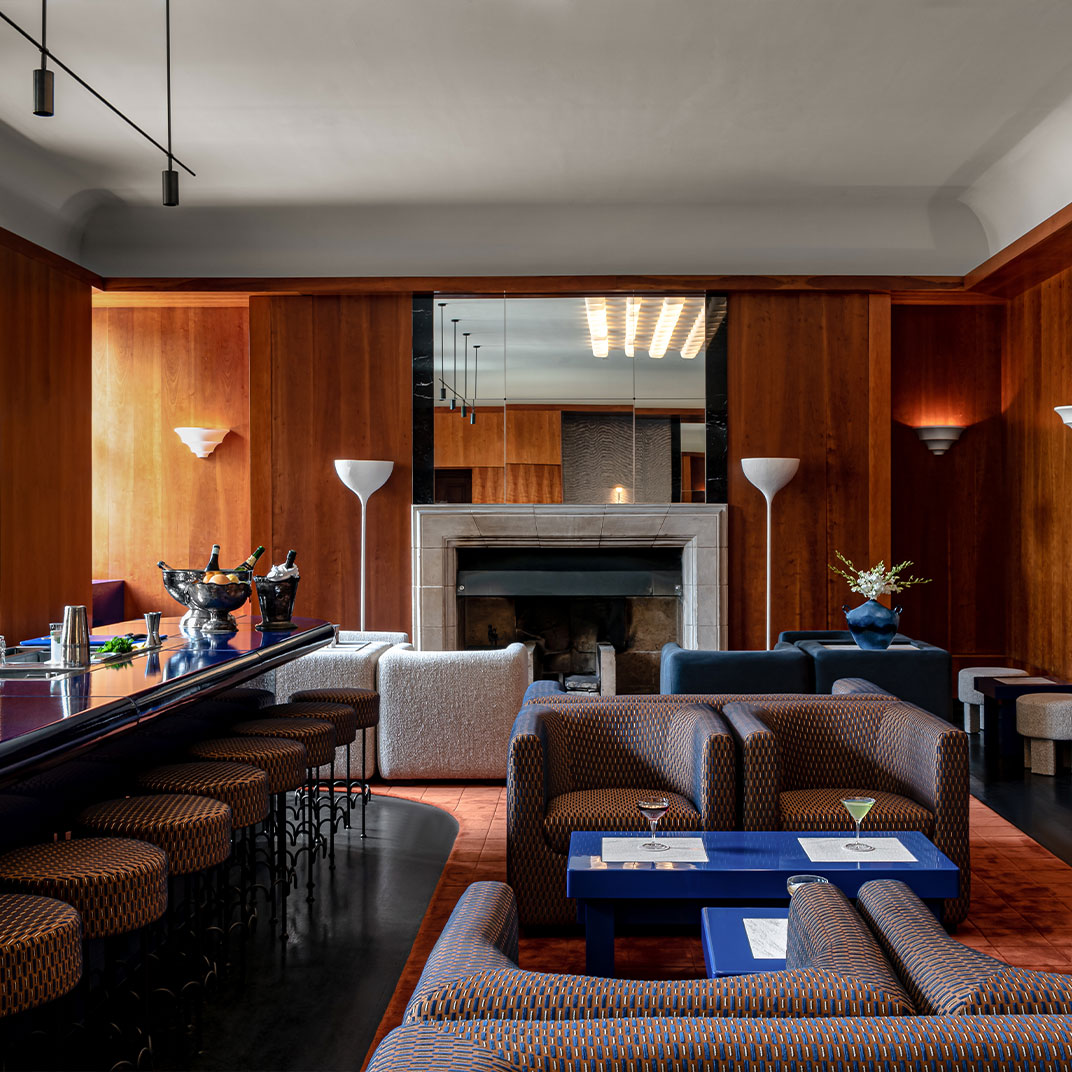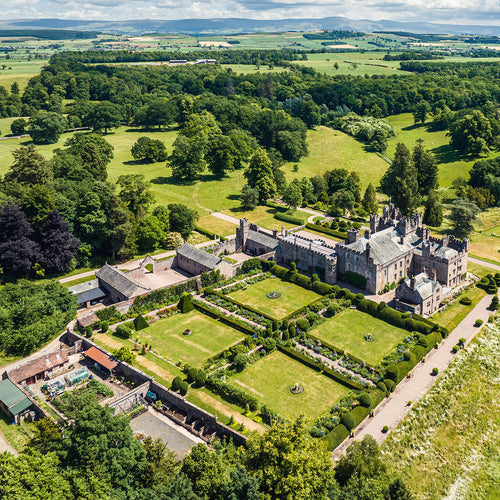THROUGH THE FAWN LENS
A Journey Through Time: Exploring the History of Interior Design

Ever wondered how the way we decorate our homes evolved over time? From ancient cave paintings to today's high-tech smart homes, interior design has seen a remarkable journey, reflecting cultural shifts, technological advancements, and ever-changing expressions of human life. Let's embark on a voyage through history, exploring the key eras and styles that have shaped the spaces we inhabit.
THE DAWN OF DESIGN: EARLY CIVILISATIONS (3500 BC - 500 AD)
Even in the earliest human settlements, evidence suggests conscious efforts to decorate living spaces. Cave paintings in Lascaux, France, dating back to 35,000 BC, showcase symbolic imagery on walls, hinting at the desire to personalise and beautify surroundings. In ancient Egypt, elaborate tomb decorations revealed a preoccupation with the afterlife and showcased skilled craftsmanship in furniture, textiles, and murals. Similarly, Mesopotamian palaces boasted intricate tilework, geometric patterns, and functional yet impressive furniture.
THE GRANDIOSE AND THE SPIRITUAL: CLASSICAL ANTIQUITY (500 BC - 400 AD)
Greek and Roman civilisations ushered in an era of grandeur and symmetry. Open floor plans, colonnades, and mosaics characterised Greek interiors, while Romans embraced intricate marble floors, colorful frescoes, and opulent furniture. Temples and public spaces displayed a focus on proportion, balance, and the use of natural light. The rise of Christianity later saw the emergence of basilicas, with soaring ceilings and stained glass windows creating a sense of awe and spirituality.
THE FLOURISHING OF COMFORT AND LUXURY: MEDIEVAL ERA (400 - 1450 AD)
During the Middle Ages, castles and manor houses dominated design, prioritising defense and practicality. Thick walls, tapestries for insulation, and heavy furniture reflected the harsh realities of the time. However, within these austere settings, a yearning for comfort emerged. Private chambers showcased ornately carved furniture, rich fabrics, and tapestries depicting religious or mythological scenes.
THE AGE OF ELEGANCE AND OPULENCE: RENAISSANCE (1450 - 1600 AD)
The Renaissance marked a dramatic shift towards classical ideals and luxury. Palaces like the Pitti Palace in Florence boasted grand rooms adorned with frescos, sculptures, and intricate furniture inspired by antiquity. Symmetry, proportion, and the use of perspective became key design principles. Textiles featured rich patterns and textures, while furniture became ornate and comfortable. This opulent style spread across Europe, reflecting the power and wealth of the aristocracy.
THE EVOLUTION OF THE GRAND SALON: BAROQUE AND ROCOCO (1600 - 1750 AD)
The Baroque period saw a further embrace of drama and excess. Interiors became theatrical, employing elaborate ornamentation, curved lines, and bold colours. Mirrors, chandeliers, and gilded furniture served to impress and reflect the wealth of the owners. The Rococo era, a more playful offshoot of Baroque, softened the edges with pastel colours, floral motifs, and asymmetrical arrangements. These styles catered to the social gatherings and intellectual pursuits of the upper classes.
THE SEEDS OF SIMPLICITY: NEOCLASSICAL AND ROMANTIC (1750 - 1850 AD)
A reaction to the extravagance of Baroque and Rococo came in the form of Neoclassicism. Inspired by ancient Greek and Roman architecture, designers embraced clean lines, symmetry, and natural materials like wood and marble. This shift reflected a desire for order and reason, aligning with the Enlightenment period. Later, Romanticism brought a newfound appreciation for nature and emotion into design. Interiors adorned with floral patterns, gothic elements, and handcrafted furniture embodied a sense of nostalgia and individuality.
THE INDUSTRIAL REVOLUTION AND ITS IMPACT: VICTORIAN ERA (1850 - 1900 AD)
The Victorian era witnessed a significant impact from the Industrial Revolution. Mass production made decorative items and furniture more accessible, leading to cluttered and ornate interiors. Dark colours, heavy drapery, and patterned wallpapers reflected a sense of progress and materialism. However, Gothic Revival and Arts and Crafts movements advocated for simpler forms and a return to craftsmanship, paving the way for future design trends.
BREAKING THE MOLD: MODERNISM AND ART DECO (1900 - 1940 AD)
By the 20th century, a dramatic shift towards functionality and simplicity emerged. Modernism rejected ornamentation, favouring clean lines, open floor plans, and the use of new materials like steel and glass. This starkly contrasted with the opulent Art Deco style, which incorporated geometric patterns, bold colours, and metallic accents, reflecting the glamour and excitement of the roaring twenties.
POST-WAR PRAGMATISM AND THE RISE OF CONSUMERISM: MID-CENTURY MODERN AND BEYOND (1940s - PRESENT)
Post-war reconstruction necessitated practicality and affordability. Mid-century modern embraced open floor plans, modular furniture, and natural light. Materials like plywood, laminate, and plastics became popular due to their ease of use and production. Icons like Charles and Ray Eames and Le Corbusier championed functionality and clean lines, paving the way for Scandinavian minimalism and Danish Modern furniture.
POP CULTURE'S INFLUENCE: THE 1960s AND 70s
The 1960s and 70s saw a vibrant counterculture movement reflected in design. Space Age aesthetics featuring bold colours, metallics, and organic shapes emerged. Psychedelic prints, floral patterns, and beanbag chairs reflected a more playful and informal approach. Pop Art influences led to the use of everyday objects as decorative elements, while the hippie movement popularised natural materials like rattan and wicker.
THE POSTMODERN REBELLION (1970s - 1980s)
By the 1970s, a reaction to modernism's strictures led to Postmodernism. Eclecticism reigned supreme, rejecting rigid rules and embracing playful colours, textures, and historical references. Memphis Group, led by Ettore Sottsass, became synonymous with playful, bold designs featuring geometric shapes, laminates, and vibrant colours. This era paved the way for a more individualistic and playful approach to design.
LUXURY REDEFINED: THE 1980s AND 90s
The 1980s witnessed a return to luxury, albeit with a modern twist. Sleek black marble, chrome accents, and high-gloss finishes defined the "Miami Vice" style. Designer labels like Armani and Donna Karan translated their fashion palettes into opulent home decor. The 1990s saw a shift towards minimalism and natural materials. Clean lines, earthy tones, and uncluttered spaces reflected a desire for simplicity and serenity.
THE DIGITAL AGE AND BEYOND (2000s - PRESENT)
The 21st century brought technology's full integration into the home. Smart technology, automation, and home entertainment systems redefined living spaces. Sustainability gained traction, leading to a focus on eco-friendly materials and energy-efficient design. Open floor plans remained popular, while biophilic design, incorporating natural elements for well-being, gained prominence.
GLOBAL FUSION AND PERSONALISATION:
Today, interior design reflects a globalised world. Eclecticism reigns, with influences from diverse cultures seamlessly blending to create unique spaces. Personalisation is key, with designers catering to individual needs and lifestyles. Trends like Japandi (fusion of Japanese and Scandinavian minimalism), maximalism (embrace of bold colours and patterns), and hygge (creating cozy and inviting atmospheres) showcase the vast spectrum of contemporary design.
LOOKING AHEAD: THE FUTURE HORIZON
The future of interior design promises continued evolution, shaped by:
- Personalised experiences: Using technology and data to create spaces that adapt to individual needs and preferences.
- Wellness-focussed design: Integrating elements that promote physical and mental well-being, like biophilic design and natural light.
- Sustainable practices: Utilising eco-friendly materials, energy-efficient technologies, and circular design principles.
- Technological integration: Smart homes will seamlessly integrate technology for comfort, efficiency, and entertainment.
- Global fusion: Influences from diverse cultures will continue to inspire unique and eclectic designs.
Interior design's journey reflects the ever-changing tapestry of human history, culture, and technology. As we move forward, our living spaces will continue to evolve, shaped by our individual needs and aspirations, creating a symphony of comfort, functionality, and personal expression.



